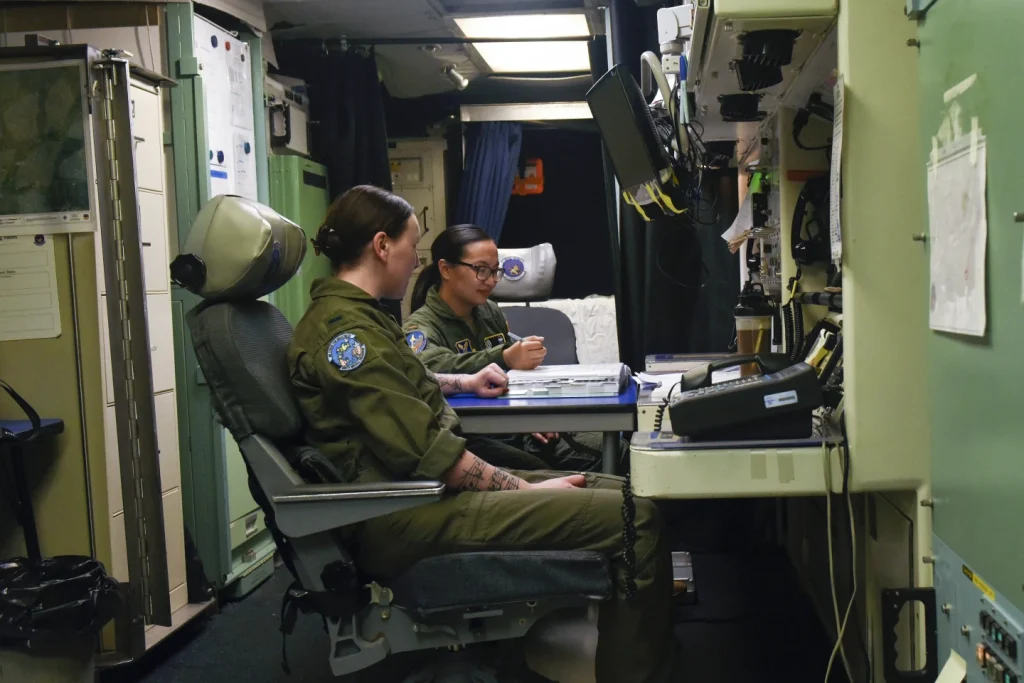The recent revelations regarding the hazardous working conditions within the underground capsules and silos where Air Force nuclear missile crews have operated since the 1960s have sent shockwaves through the military community and beyond.
The distressing accounts of a large pool of dark liquid, poor ventilation, and dangerously high levels of asbestos, coupled with the subsequent health implications experienced by many service members, have brought to light a deeply concerning and previously undisclosed chapter in the history of these facilities.
The release of hundreds of pages of documents, obtained by The Associated Press through Freedom of Information Act requests, has unveiled a stark contrast between the reality of the working environment and the information provided to the nuclear missile community by Air Force leadership.
This essay will delve into the implications of these revelations, examining the ethical, health, and leadership dimensions of this disconcerting situation.
The disclosure of the toxic risks present in the Air Force nuclear missile facilities raises profound ethical concerns regarding the treatment of service members and the responsibility of leadership.
The stark disparity between the information conveyed to the nuclear missile community and the actual conditions in which they operated challenges the ethical principles of transparency, honesty, and the duty of care owed to military personnel.
The failure to disclose the true extent of the hazards within these facilities not only jeopardized the health and safety of the service members but also undermined their trust in the institution and its leadership.
This breach of trust and the resultant health implications faced by many individuals demand a thorough ethical examination and accountability from those in positions of authority.
The documented toxic risks within the Air Force nuclear missile facilities have had profound health implications for many service members.
The reported cases of cancer among those who worked in these environments underscore the severity of the health hazards they were exposed to.
The long-term health consequences of exposure to substances such as asbestos and other toxic materials are well-documented, and the revelation that many individuals now suffer from cancer as a result of their service raises urgent questions about the adequacy of health and safety measures in place at the time.
Furthermore, the impact of these health implications extends beyond the affected individuals to their families and communities, highlighting the far-reaching consequences of the failure to address and mitigate the risks present in these facilities.
The revelation of the toxic risks within the Air Force nuclear missile facilities also brings into focus the issue of leadership and accountability.
The discrepancy between the information provided by Air Force leadership and the actual conditions within these facilities raises fundamental questions about the oversight, responsibility, and decision-making processes within the military hierarchy.
The failure to address and disclose the hazards present in these environments reflects a significant lapse in leadership, highlighting the need for greater accountability and transparency within the military chain of command.

The repercussions of this failure extend beyond the immediate health implications to the erosion of trust in leadership and the broader implications for military culture and governance.
The exposure of the toxic risks within the Air Force nuclear missile facilities represents a sobering revelation with wide-ranging implications.
The ethical, health, and leadership dimensions of this issue demand thorough examination, accountability, and remedial action.
The health and well-being of service members, the ethical principles of transparency and honesty, and the integrity of military leadership are at the heart of this disconcerting situation.
As the full extent of the consequences becomes clear, it is imperative to address the failings that have led to this state of affairs and to ensure that such oversights are not repeated in the future.
The lessons to be learned from this troubling episode must guide the way forward, shaping a culture of transparency, accountability, and unwavering commitment to the welfare of those who serve their country.
The issue of potential health risks faced by current and former nuclear missile officers, or missileers, has once again come under scrutiny.
The Associated Press reported in January that at least nine individuals had been diagnosed with non-Hodgkin’s lymphoma, a blood cancer, and subsequently, hundreds more came forward with self-reported cancer diagnoses.
In response, the Air Force initiated a comprehensive review, testing air, water, soil, and surface samples in all facilities where service members worked.
Alarming findings have emerged, with four current samples showing unsafe levels of polychlorinated biphenyls (PCBs), a known carcinogen used in electrical wiring.
The Air Force is expected to release more data in early 2024, and an official count of affected service members is underway.
The news has understandably raised concerns among current missileers, who, despite taking precautions such as changing into “capsule clothes” upon entering the capsule for their 24-hour shifts, are now faced with the potential risks associated with their work environment.
Lt. Joy Hawkins and Lt. Samantha McGlinchey, both missileers, expressed their apprehension and emphasized the need for diligent medical checkups and cleanup efforts to mitigate any potential hazards.
However, there are fears that the dangers may be downplayed. Steven Mayne, a former senior enlisted nuclear missile facility supervisor, has called for the EPA, OSHA, and senators from North Dakota and Montana to investigate the matter.
The concerns are not new. In December 2022, former Malmstrom missileers Jackie Perdue and Monte Watts, both diagnosed with non-Hodgkin’s lymphoma, urged the Defense Department’s inspector general to investigate potential violations of health and safety standards.
The situation is compounded by the fact that the current review may not fully elucidate past exposures, leaving former missileers in a precarious position.
Despite acknowledging the limitations of the current review, the Air Force hopes the data will help establish a health profile to aid in veterans’ benefit applications.
The documents obtained by the AP also reveal historical warning signs about past toxic risks, including references to asbestos content dating back to 1992.
These revelations underscore the urgency of addressing potential health hazards faced by missileers in the past and present.

The gravity of the situation demands thorough investigation and action to ensure the health and safety of current and former missile community service members.
It is imperative that the Air Force, in collaboration with relevant regulatory bodies and government officials, conducts a comprehensive assessment of the situation, prioritizing the well-being of those who have dedicated themselves to this critical national defense role.
The findings of the ongoing review and subsequent investigations should inform robust measures to safeguard the health of missileers and address any historical lapses in safety standards.
Only through transparent and diligent efforts can we hope to mitigate the risks faced by those who serve in these vital roles and ensure a safer environment for all involved.
The story of Capsule Sierra at Malmstrom Air Force Base is a troubling one, filled with environmental hazards and potential health risks for the missileers who operated within it.
The experiences of Doreen and Jason Jenness, who lived on the base in the mid-1990s, shed light on the dangerous conditions that were present within Sierra and the other capsules at the time.
The environmental reports from Malmstrom during Jason’s assignment revealed alarming findings about Sierra.
The presence of biological growth and fluid overrun within the capsule, as well as the broken fan that prevented clean air from entering, created a hazardous environment for the missileers.
The high levels of carbon dioxide measured in the air further emphasized the danger posed by Sierra, with potential health effects such as headaches, drowsiness, and difficulty concentrating.
The installation of the new REACT system in the mid-1990s also introduced new concerns. The refurbishment process may have disturbed asbestos and PCBs that were still present in the capsules, and the malfunctioning video display unit in the new system led to the leakage of dimethylformamide, a potentially hazardous substance.

The health effects experienced by the crew, including headaches and nausea, raised further alarms about the safety of the working conditions within the capsules.
As the military prepares to transition to the new ICBM, the Sentinel, changes are on the horizon for the old Minuteman capsules.
The decision to close down the capsules and demolish them as part of the modernization process reflects an acknowledgment of the issues that have been present within these facilities.
The commitment to applying modern environmental health standards in the design of the new underground control centers for the Sentinel demonstrates a proactive approach to ensuring the safety and well-being of the personnel who will operate within them.
The story of Capsule Sierra and the environmental hazards present at Malmstrom Air Force Base serves as a reminder of the importance of prioritizing the health and safety of military personnel.

It also highlights the need for ongoing vigilance and adherence to rigorous environmental standards in the design and operation of military facilities.
By learning from the experiences of the past and implementing measures to address potential hazards, the military can ensure a safer and healthier environment for its personnel in the future.
